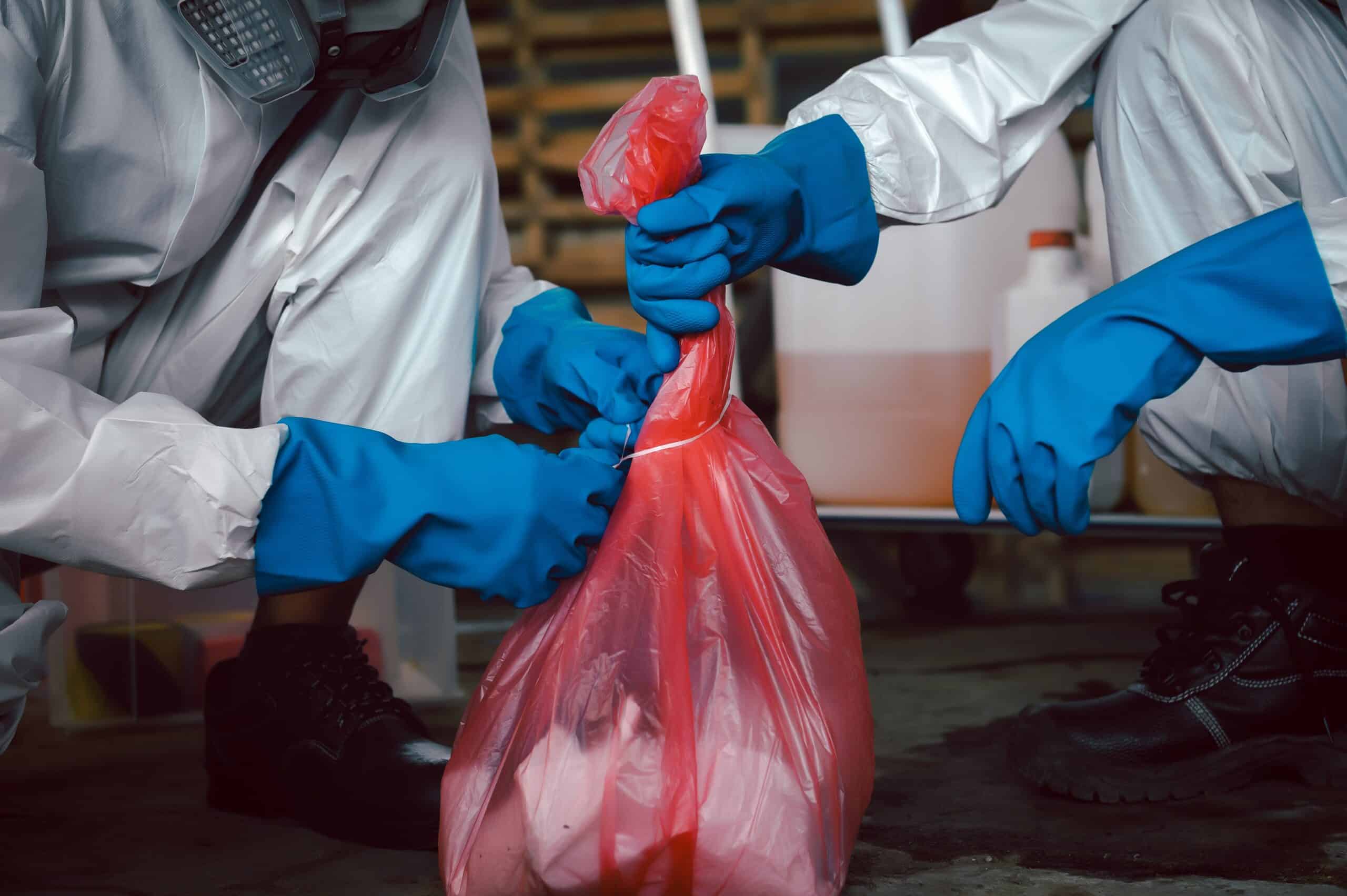Environmental & Bio Recovery Services
Clients We serve
Retail
- Hospitality
- Food Stores
- Fuel
Healthcare
- Hospitals
- Long-term Care Facilities
- Medical Offices
Multi-Family
- Condominiums
- Apartments
- Co-Ops
Institutional
- K-12
- Private Learning Centers
- Universities
Transportation
- Trucking
- Logistics & Warehousing
- Rail
- Airlines
Government
- Municipalities
- State/Province
- Federal
Pharmaceutical Production
- GMP Space
- Laboratories
- Compounding Facilities
Food Processing & Catering
- GMP Space
- Food Safety Laboratories
Life Sciences
- Biosafety Laboratories
- Vivariums
Biological hazard
Also known as biohazards, this term refers to biological substances that pose a threat to the health of living organisms, primarily that of humans. These can include:
- Medical waste or samples of a microorganism
- Viruses
- Toxins (from a biological source) that can affect human health
- Substances that are harmful to animals
- Blood and Blood Products
- Sharps and Needles
- Trauma
- Controlled Substances

Bio Recovery Services
First Onsite offers bio-recovery services which include assessing risk, mitigating threats, and remediating conditions resulting from the release of biological hazards. Examples of situations may include crime and trauma mitigation (bloodborne and body fluids), suicide cleanup, fungal and mold, response to zoonotic diseases, foodborne diseases, public health threats, illicit drugs, and clandestine drug labs.
All hazardous and biohazardous waste is properly packaged, transported, and disposed of at licensed waste facilities in compliance with local and federal laws.
Compliance, Training and Certification
First Onsite maintains strict compliance with all local, regional, and national environmental regulations and guidelines. Our certified team members undergo rigorous training to achieve required certifications that result in a level of excellence clients can depend upon.
Hazardous Substance and Spill Management
Hazardous waste are substances that will, or may, result in adverse effects on the health or safety of employees. First Onsite manages all customer-generated hazardous waste according to the National and local government laws. This includes the management of waste from the mitigation from releases of hazardous substances.
Hazardous spills can be a release of gasoline, other fuels, acids, caustics, solvents and chlorine. These events tend to happen when there is a transportation accident or industrial accident.

Hazardous Services
While each spill is unique, the general process includes assessing the risk associated with the release, containing it to prevent further spread, removing the spilled substance, cleaning and restoring the affected area, disposing of waste according to federal and state laws, and monitoring the site for any ongoing impact.
First Onsite provides groundwater and soil remediation related to spills and leaks of Underground Storage Tanks and Above Ground Storage (UST/AGS) tanks for fuel.
Disclaimer: Groundwater and Soil remediation services may not be available at all First Onsite locations. If direct service cannot be provided, First Onsite will engage a qualified subcontractor.
Compliance, Training, and Certifications
First Onsite response teams are subject to OSHA HAZWOPER 40 hour training, defined in the United States Federal Code of Regulations CFR 1910.120 and Bloodborne Pathogens OSHA CFR 1910.1030 for emergency mitigation and or remediation. All OSHA and US DOT regulations are strictly adhered to when performing services for hazardous waste and spills.
Your Property is in good hands
Training Standards
- OSHA Hazardous Waste Operations and Emergency Response (OSHA 1910.120)
- OSHA Blood Borne Pathogens (OSHA 1910.1030)
- OSHA General Construction (OSHA Outreach)